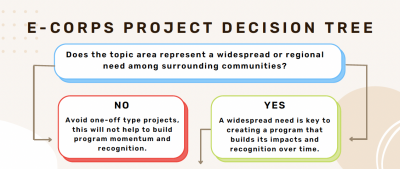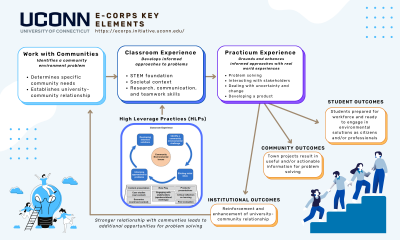The E-Corps model combines classroom instruction and a practicum comprised of service learning founded on Extension (or Extension-like) outreach programming. This section looks at that combination a bit more closely, with a particular focus on the outreach aspect and how that relates to fashioning a program.
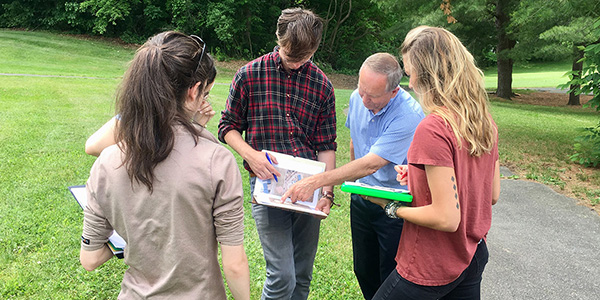
Program Components
E-Corps combines three key elements: classroom instruction, service learning, and Extension outreach. Click here to view the diagram shown below that depicts how we envision these elements relate to each other.
There are currently three E-Corps classes, each addressing the local impacts of, and responses to, a pressing environmental problem: climate resilience, brownfields redevelopment, and stormwater management. Students enroll in a classroom semester, during which many active learning techniques are employed to give them a "real world" feel for the issue at hand (see Classroom). The classroom semester is then followed by an optional practicum semester, during which students are formed into teams and paired with community partners to work on projects; the goal is for the project results to be useful and actionable for the community.
Community Relationships
An ongoing relationship with communities is perhaps the most critical element of the model, and the most difficult part to develop if it does not already exist. A relationship is essential for several reasons: (1) it provides you with an understanding of the way the issue that you want to address plays out on the local stage, and thus what the needs of the communities might be and what projects might be most useful; (2) it provides legitimacy and recognition of the potential value of university assistance, as opposed to the “parachuting in” approach, and; (3) it provides you with local contacts with whom you can test out your ideas and/or pilot your approach.
At UConn, the ties to our community partners are provided by faculty with longstanding Extension (Climate, Stormwater) or “Extension-like” (Brownfields) programs. These faculty have years of experience in understanding the local impacts, needs, and barriers pertaining to a given environmental problem. They also have the local contacts needed to solicit community partners (see also Practicum). It is likely, then, that Land/Sea Grant institutions might provide more opportunities for relatively quick development of a program modeled after E-Corps. However, as demonstrated by our Brownfields Corps faculty there are other ways to develop long-term relationships with communities. Below are links to the websites of the “parent” community programs of each of the 3 courses, to give you a feel for the context within which the classes are developed.
Climate Adaptation Academy UConn TAB Program CT NEMO Program
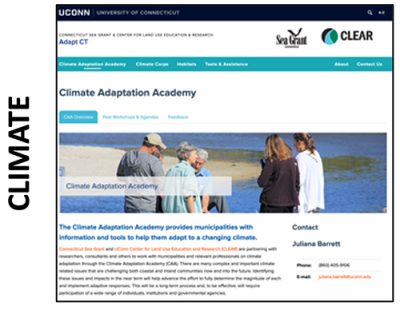
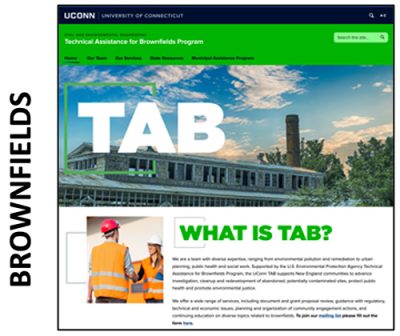
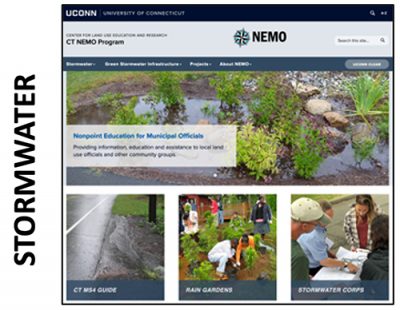
Choosing a Topic
Not all topics will be a good fit for this model. The authors have knowledge only of their own fields and are not in a position to determine what is or is not a good fit with the model regarding other disciplines. That said, there are some basic considerations that we can offer for those trying to decide if they have a topic that might work as the foundation of an E-Corps approach. The document sampled below presents these considerations in the form of a “decision tree” that we hope will be helpful. Key considerations are in blue. Click here for a PDF version.